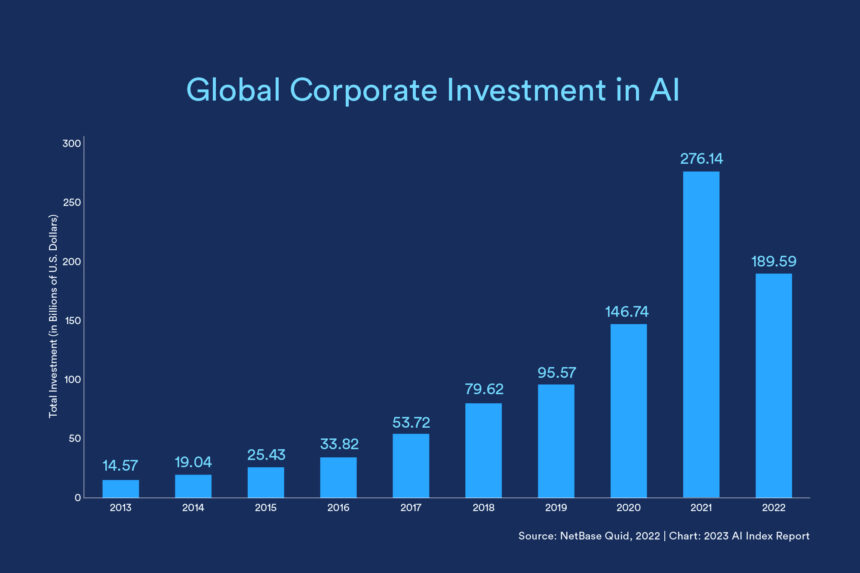The promise of artificial intelligence is everywhere. From streamlined workflows and hyper-personalized customer experiences to groundbreaking scientific discoveries, AI is touted as the transformative technology of our time. Companies worldwide are pouring billions into this digital gold rush, with enterprise AI investments skyrocketing.
- Unpacking the “GenAI Divide”: The Core Problems
- The Learning Gap and the “Blank Slate” Problem
- Misaligned Investment and the Back-Office Goldmine
- The Dangers of “Shadow AI”
- The Blueprint for Success: How to Be in the 5%
- Prioritize Outcomes Over Experiments
- Focus on Adoption, Not Just Innovation
- Build the Right Foundation for Data and Governance
- Partner Wisely and Avoid Reinventing the Wheel
- The Bigger Picture: AI Isn’t a Bubble, It’s an Evolution
Yet, for all the hype and capital, a sobering truth has emerged from one of the world’s most prestigious institutions. A recent study from MIT Media Lab, led by researcher Aditya Challapally, reveals a stunning statistic: 95% of enterprise AI investments are failing to deliver a measurable return.
This isn’t just a blip on the radar; it’s a massive wake-up call. The report, titled “The GenAI Divide: State of AI in Business 2025,” has sent shockwaves through the corporate world, forcing a difficult but necessary conversation.
If we’re on the cusp of a technological revolution, why are so many companies getting left behind? The answer, as the MIT report suggests, isn’t about the technology itself. It’s about how we’re using it. It’s a classic case of having a powerful tool but not understanding its true purpose or how to wield it effectively.
This blog post will dive deep into the findings of this pivotal study, dissect the reasons behind the staggering failure rate, and, most importantly, provide a blueprint for how your organization can escape the 95% and join the exclusive 5% of AI success stories.
Unpacking the “GenAI Divide”: The Core Problems
The MIT study, based on interviews with over 150 industry leaders, surveys of 350 employees, and analysis of 300 public corporate AI deployments, points to a fundamental disconnect.
The “GenAI Divide” is the gap between the technology’s potential and a company’s inability to bridge it. The study highlights several key pitfalls that turn promising AI investments into expensive science projects.
The Learning Gap and the “Blank Slate” Problem
One of the most significant issues identified is what the report calls the “learning gap.” Generic, off-the-shelf AI models like ChatGPT are fantastic for individual, ad-hoc tasks. They are like a brilliant intern who knows a little about everything but forgets the context of a previous conversation the moment you close the chat window.
In an enterprise setting, this is a fatal flaw. A company’s internal knowledge base its past projects, client preferences, and operational quirks is its most valuable asset.
The study found that most AI pilot programs failed because the tools could not adapt to or retain this context. They are “brittle” and misaligned with day-to-day operations.
This “blank slate” problem means every new interaction is a fresh start, preventing the AI from becoming a truly integrated and valuable part of the workflow.
Practical Tip: Instead of trying to force a generic model into a complex workflow, focus on use cases that are inherently self-contained. For example, a marketing team could use a generic AI to brainstorm blog post titles, but should not expect it to write a full report based on proprietary, un-fed data.
For deeper integration, consider models or platforms that allow for continuous learning and fine-tuning on your specific data, even if it’s a smaller-scale project.
Misaligned Investment and the Back-Office Goldmine
The MIT report revealed a glaring misalignment in where companies are spending their AI budgets. More than half of all AI investments are currently directed toward high-visibility, front-office functions like sales and marketing tools. Executives are drawn to the shiny, customer-facing applications that promise to “transform” the customer experience.
However, the study found the strongest returns on AI investments were not in these areas. The real value and ROI came from behind-the-scenes automation the “boring” but critical back-office functions. Think:
- Automating business process outsourcing
- Streamlining procurement and invoice processing
- Reducing external agency costs
- Accelerating finance operations
One of the most compelling examples cited was a startup that saw revenues jump from zero to $20 million in a year by focusing on one specific back-office pain point.
This demonstrates that impactful AI isn’t always about revolutionizing the front end; sometimes, it’s about optimizing the engine room.
Practical Tip: Before allocating budget to a new AI project, conduct a strategic audit of your business processes. Look for repetitive, data-intensive, and time-consuming tasks in departments like finance, HR, or operations.
These are often low-hanging fruit for automation that can deliver significant and measurable cost savings, making for a much stronger business case for your AI Investments.
The Dangers of “Shadow AI”
Another fascinating finding from the MIT study is the prevalence of “Shadow AI.” While only 40% of companies have an official AI subscription, a staggering 90% of employees are regularly using personal AI tools for work-related tasks.
This reveals a potent truth: employees are hungry for productivity gains and will find a way to get them, even if it means bypassing official corporate channels.
This “Shadow AI” adoption, while an indicator of a real need, also introduces significant risks around data security, compliance, and governance. A lawyer interviewed for the study mentioned that despite their firm’s expensive, custom-built contract analysis tool, they found a generic, free-to-use AI consistently produced better results.
This highlights a critical lesson: the people closest to the work often know what they need, and top-down mandates can fail to meet real-world needs.
Practical Tip: Instead of fighting against Shadow AI, embrace it. Create a safe, sanctioned environment for employees to experiment with and use AI tools. Establish clear governance guidelines and provide training on responsible use.
By empowering your teams to identify and vet tools for their specific needs, you’ll uncover use cases that a central AI team might never have considered. For more insights on this, read our post The Employee-Led Innovation Playbook.
The Blueprint for Success: How to Be in the 5%
If the 95% failure rate is a symptom of a flawed approach, what does the successful 5% do differently? The MIT report provides a clear blueprint for success, built on a foundation of strategic planning, practical execution, and a shift in mindset.
Prioritize Outcomes Over Experiments
Many companies treat AI as an experiment. They launch a pilot program to “see what happens” without a clearly defined business problem to solve or a measurable metric for success. The successful 5% do the opposite. They treat AI as a business capability, not a science project.
They start with a specific, quantifiable problem: “How can we reduce the time it takes to process insurance claims by 30%?” or “How can we increase the accuracy of our sales forecasts by 15%?” This focus ensures that every step, from data preparation to model deployment, is aligned with a clear business outcome.
As our recent article on Building an AI-First Company Culture highlights, this is a cultural shift as much as a technological one.
Practical Tip: When proposing a new AI project, frame it not as a pilot but as a solution. Instead of saying, “Let’s explore using AI for customer service,” say, “We will implement an AI-powered chatbot to resolve 40% of tier-1 support tickets automatically, freeing up our human agents for more complex issues.”
Focus on Adoption, Not Just Innovation
One of the most critical reasons for AI project failure is the inability to integrate the new technology into existing day-to-day workflows. An AI solution is useless if employees don’t use it. The successful 5% recognize that AI adoption is a change management initiative, not just a technology rollout.
They provide comprehensive training, involve end-users from the beginning, and design user-friendly interfaces that fit seamlessly into existing processes.
Practical Tip: Treat your AI implementation like a new product launch. Involve the end-users (the employees) in the design process. Provide clear, personalized use cases for each role and offer ongoing training and support. Measure success not just by the AI’s performance but also by its adoption rate.
Build the Right Foundation for Data and Governance
AI is only as good as the data it’s trained on. The MIT report found that many projects failed because of a lack of a clean, integrated, and reliable data foundation.
Without robust data pipelines and clear governance policies, AI models are prone to inaccuracies and “hallucinations,” making them unreliable for mission-critical work.
Practical Tip: Before you even think about buying a new AI tool, invest in your data infrastructure. Ensure your data is clean, well-organized, and easily accessible. Develop clear governance policies around data usage, privacy, and security to build trust and ensure compliance.
This foundational work is the unsung hero of successful AI investments. It’s the less glamorous but infinitely more important step.
Partner Wisely and Avoid Reinventing the Wheel
The study found a surprising metric: companies that partnered with specialized third-party vendors for AI solutions succeeded about 67% of the time, while internal, custom-built projects succeeded only one-third of the time. This challenges the common assumption that proprietary in-house systems are always superior.
In many cases, building a complex AI system from scratch is an unnecessary and costly endeavor. Specialized vendors have deep domain expertise, proven models, and the infrastructure to support deployment and maintenance. For many use cases, leveraging a vendor’s expertise can fast-track implementation and significantly increase the odds of success.
Practical Tip: Before deciding to build or buy, conduct a thorough cost-benefit analysis. For common business problems, look for vendors with a proven track record.
Reserve your in-house talent for highly unique, mission-critical problems that give your company a genuine competitive advantage. For more information on this, see our in-depth guide to Selecting the Right AI Vendor.
The Bigger Picture: AI Isn’t a Bubble, It’s an Evolution
The 95% failure rate is not a sign that the AI bubble is bursting. Rather, it is a signal that the AI industry is maturing and moving beyond the hype. It’s a natural correction, a period where the initial rush of enthusiasm gives way to a more pragmatic, results-driven approach.
The companies that are succeeding understand this. They see AI not as a magic bullet but as a powerful, yet complex, tool that requires strategic planning, a strong data foundation, and a focus on human-centric adoption.
They aren’t just making AI investments; they’re making smart investments in the future of their business. They are the ones who will truly capture the value of this transformative technology.
Ultimately, the MIT report serves as a wake-up call and a guide. It exposes the flaws in our collective approach to AI but also provides a clear path forward.
By focusing on practical problems, building strong foundations, and empowering our teams, we can move beyond the staggering failure rate and harness the true potential of artificial intelligence to drive real, measurable value. The AI revolution isn’t over it’s just getting started, and this time, we have a better roadmap.








